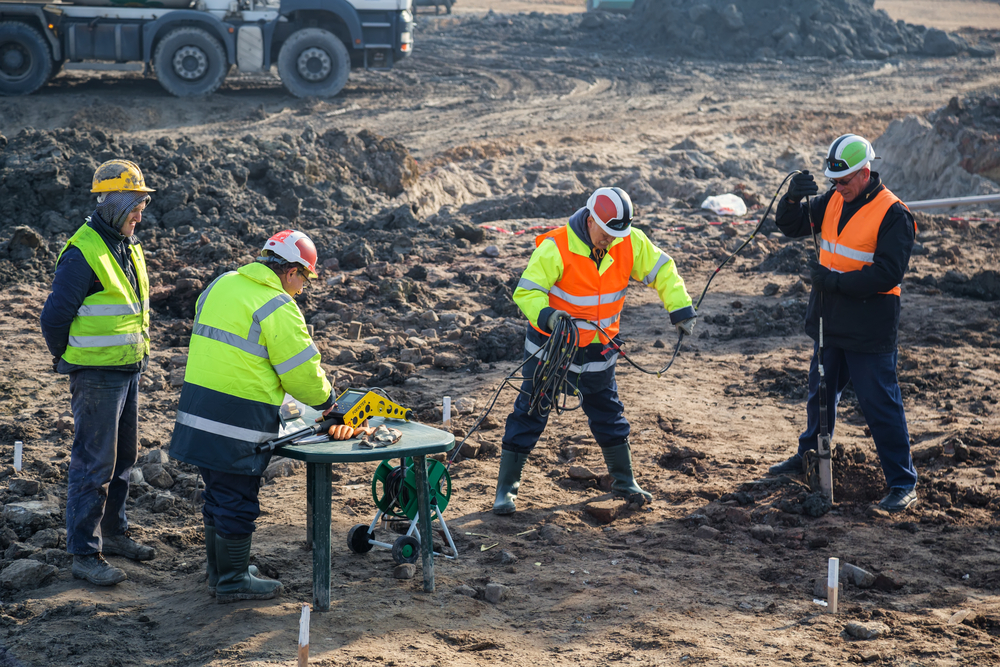Expert Consulting Engineer Services for Innovative Infrastructure Solutions
Wiki Article
The Interdisciplinary Approaches in the Geotechnical Market: Linking the Space Between Engineering, Geology, and Environmental Scientific Research for Ideal Job Outcomes
The combination of design, geology, and ecological science within the geotechnical industry is not merely advantageous; it is essential for accomplishing optimal project results. This interdisciplinary cooperation cultivates a comprehensive understanding of complicated website conditions, permitting innovative solutions to emerge. By taking a look at crucial roles and successful study, we can reveal the dynamic interplay that drives project success. Nonetheless, obstacles continue to be in efficiently managing these multidisciplinary initiatives, questioning concerning future patterns and possible advancements. What approaches might arise to facilitate this essential cooperation and enhance the efficiency of geotechnical methods?Value of Interdisciplinary Collaboration
The significance of interdisciplinary partnership in the geotechnical market can not be overemphasized. Effective geotechnical tasks need the combination of diverse competence from numerous areas, consisting of design, geology, and ecological scientific research. This partnership makes sure that all facets of a project are thought about, bring about comprehensive remedies that deal with complex challenges.Interdisciplinary collaboration cultivates innovation by making it possible for specialists to share insights and methods that may not appear when working in seclusion (geotechnical engineers). By leveraging the staminas of several techniques, groups can determine prospective dangers, maximize layout processes, and enhance the sustainability of geotechnical jobs. In addition, such partnership promotes an all natural understanding of site-specific conditions, which is important for exact evaluation and decision-making.
The intricacy of geotechnical tasks necessitates a worked with approach to problem-solving. Eventually, interdisciplinary collaboration is necessary for advancing finest methods and attaining excellence in the geotechnical industry.
Secret Duties of Each Technique
Cooperation amongst numerous techniques is not simply helpful; it is important for the effective execution of geotechnical jobs. Each discipline-- engineering, geology, and environmental scientific research-- plays a distinctive yet interconnected duty that adds to predict effectiveness and sustainability.Geotechnical engineers are primarily in charge of developing structures and ensuring architectural honesty. They evaluate soil and rock residential properties to assess load-bearing capacities, giving crucial information for safe building techniques. Their competence allows the formulation of innovative options to intricate obstacles.

Ecological scientists evaluate the possible impacts of building and construction on ecosystems and water resources. They conduct ecological analyses and create mitigation techniques to minimize negative impacts. By incorporating ecological factors to consider, they guarantee compliance with policies and advertise sustainability throughout the job lifecycle.
Situation Researches of Effective Assimilation
Effective integration of geotechnical techniques can be exhibited through various case studies that highlight the efficiency of teamwork in addressing complicated design difficulties. One noteworthy example is the construction of the Hong Kong-- Zhuhai-- Macau Bridge, where a collaborative strategy including geotechnical design, geology, and environmental science was essential. Designers and rock hounds operated in unison to examine the seabed conditions and optimize the foundation layout, guaranteeing stability and decreasing ecological impact.Another impactful case is the renovation of incline security in the Recommended Site San Francisco Bay Location, where an interdisciplinary group incorporated geotechnical evaluation with environmental assessments. By incorporating hydrological studies and geological studies, the group efficiently identified prospective landslide risks and executed effective mitigation procedures, improving security and sustainability.
Furthermore, the redevelopment of Brownfield websites usually calls for a multidisciplinary strategy. In one situation in Chicago, collaboration amongst geotechnical engineers, environmental researchers, and metropolitan planners caused the effective removal of contaminated dirt, permitting the safe change of the website right into an area park. These study highlight that interdisciplinary cooperation not just addresses technical difficulties however additionally promotes ingenious their website options that benefit both jobs and communities.
Difficulties in Multidisciplinary Projects

Moreover, collaborating schedules and workflows among different teams can be problematic, particularly when each technique has special project turning points and deliverables. This imbalance can lead to hold-ups and boosted expenses. The challenge of resource appropriation likewise looms huge; guaranteeing that customized knowledge is available at essential times needs cautious planning and insight.
Lastly, governing compliance positions another considerable obstacle. Each discipline may deal with different regulative structures, and aligning these needs to meet job objectives can be taxing and intricate. Dealing with these obstacles necessitates strong leadership and reliable communication approaches to promote partnership and make certain that multidisciplinary groups function cohesively in the direction of shared goals.
Future Trends in Geotechnical Practices
As the geotechnical industry evolves, emerging trends are reshaping techniques to resolve the difficulties encountered in multidisciplinary projects - tailings engineer. One considerable trend is the boosted assimilation of advanced technologies, such as artificial intelligence and maker discovering, right into geotechnical evaluation and design. These technologies boost anticipating modeling and risk analysis, allowing engineers to make more informed choices throughout the project lifecycle
Furthermore, the adoption of electronic twins and real-time tracking systems is ending up being a lot more widespread. These tools help with ongoing analysis of dirt problems and structural performance, enabling timely treatments when concerns emerge.
Final Thought
In verdict, the combination of design, geology, and environmental scientific research is essential for attaining optimal results check out here in the geotechnical industry. Interdisciplinary collaboration promotes advancement, improves problem-solving capabilities, and aligns technological requirements with ecological sustainability. Effective study show the advantages of this method, while acknowledging the challenges dealt with in multidisciplinary tasks. Looking in advance, welcoming these collaborative techniques will be necessary for browsing future trends and progressing the field of geotechnical design.The integration of engineering, geology, and ecological scientific research within the geotechnical market is not just advantageous; it is necessary for achieving ideal job outcomes. Effective geotechnical jobs call for the assimilation of diverse competence from numerous areas, consisting of design, geology, and ecological science.Navigating the complexities of multidisciplinary jobs in the geotechnical sector offers several considerable obstacles.As the geotechnical industry evolves, arising patterns are reshaping techniques to deal with the difficulties dealt with in multidisciplinary projects. Geotechnical designers are progressively working together with environmental scientists to make certain that tasks align with sustainability goals and abide with governing requirements.
Report this wiki page